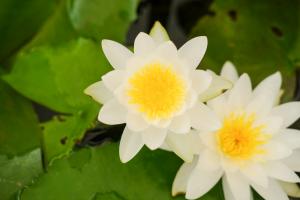Brussels Sprouts: When to Plant
Brussels sprouts are a nutritious and delicious vegetable that make a great addition to any garden. But when is the best time to plant them? In this article, we鈥檒l go over everything you need to know about planting Brussels sprouts, including when to do it and how to care for them.
When to Plant Brussels Sprouts
The ideal time to plant Brussels sprouts is in the late summer or early fall, typically around late August to early September. This timing allows the plants to grow during the cool months of fall and winter, which is when Brussels sprouts taste the best.
If you live in an area with mild winters, you may also be able to plant Brussels sprouts in the spring. Just be aware that the plants may not taste as good as those grown in the fall/winter, as the heat can cause them to become bitter.
How to Plant Brussels Sprouts
When planting Brussels sprouts, choose a location in your garden that gets at least six hours of direct sunlight per day. The soil should be fertile, well-draining, and have a pH between 6.0 and 7.5.
Plant the seeds 1/2 inch deep and 2 inches apart in rows that are 2-3 feet apart. After the seeds have sprouted, thin them to 12-24 inches apart in the row. Brussels sprouts also benefit from being planted with other vegetables, such as carrots or peas.
Water the plants regularly, making sure the soil stays consistently moist. Mulch the area around the plants to help retain moisture and suppress weeds. You can also fertilize the plants once a month with a balanced fertilizer.
Caring for Brussels Sprouts
Brussels sprouts require a bit of maintenance to ensure healthy growth. Be on the lookout for pests such as aphids and cabbage worms, and treat as necessary. You can also use row covers to help prevent infestations.
Harvest the Brussels sprouts once they have reached their full size (typically about 1-2 inches in diameter). Pick from the bottom of the plant up, removing the larger, outer leaves and leaving the smaller sprouts to continue growing.
After harvesting, you can store Brussels sprouts in the refrigerator for up to a week. They can also be frozen for later use.
Conclusion
Brussels sprouts are a versatile and nutritious vegetable that are easy to grow in your own garden. By planting in the fall, providing proper care, and keeping an eye out for pests, you can enjoy delicious homegrown Brussels sprouts in no time!

 how many times do yo...
how many times do yo... how many planted tre...
how many planted tre... how many pine trees ...
how many pine trees ... how many pecan trees...
how many pecan trees... how many plants comp...
how many plants comp... how many plants can ...
how many plants can ... how many plants and ...
how many plants and ... how many pepper plan...
how many pepper plan...































